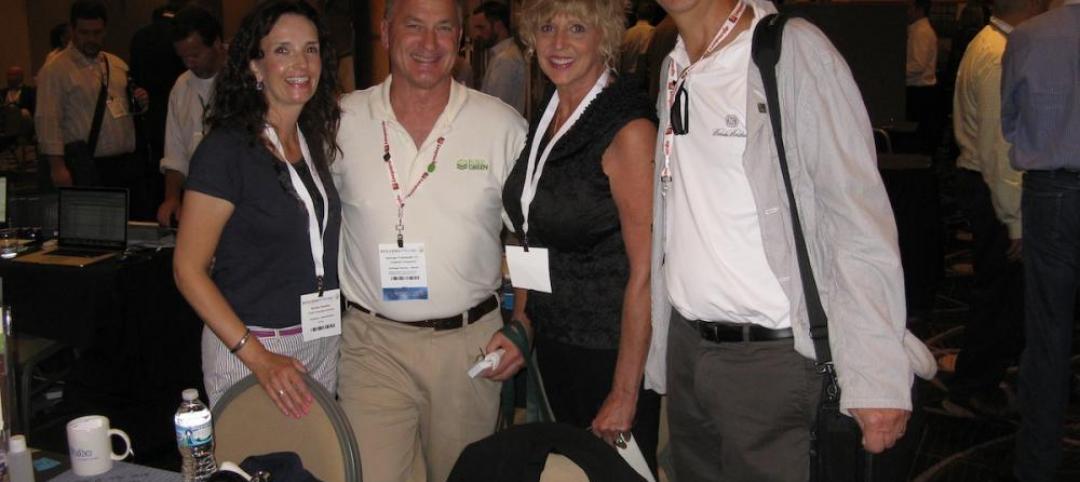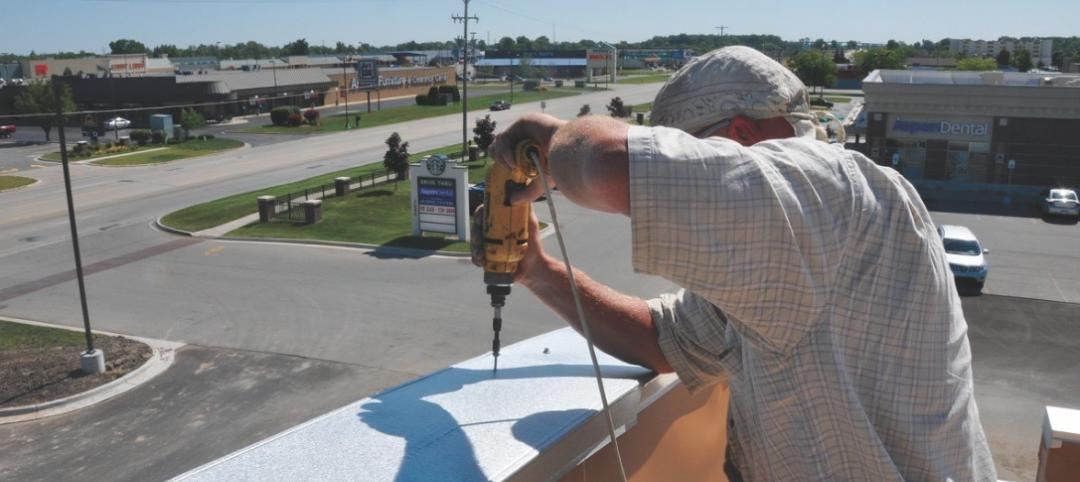 |
14. Mod Pod A Nod to Flex Biz
Designed by the British firm Tate + Hindle, the OfficePOD is a flexible office space that can be installed, well, just about anywhere, indoors or out. The self-contained modular units measure about seven feet square and are designed to serve as dedicated space for employees who work from home or other remote locations. Construction of the modular pods includes natural, recycled, and recyclable materials, as well as insulation and a high-efficiency HVAC system. The pods are plug-in powered; the fully wired units connect to an existing structure (home, garage, office building, um...Starbucks?) while IT and phone connectivity is wireless, but can also be cabled in. Delivery takes approximately 12 weeks. |
15. Transform any Work Surface into A Charging Station
 |
16. Concrete Slabs Plays up Rubber Ball Technology
17. Brown Rice for Greener Concrete
While slag from steel mills, fly ash, and silica fume are being added to concrete to reduce the material's greenhouse gas emissions and make it stronger and more resistant to corrosion, rice husks (the small cases around edible rice kernels) have so far proved an unsuitable additive because when burned, its ash is too contaminated with carbon. However, scientists were focused on finding ways to utilize rice husks because they are very rich in silicon dioxide, a core concrete ingredient. A breakthrough has come from researchers at Plano, Texas-based ChK Group, who discovered that superheating the husks to almost 1500 °F in an oxygen-free furnace produces pure, nearly carbon-free silica. ChK researchers, who are still refining their production processes, speculate a single full-size furnace could produce 15,000 tons of rice husk ash annually, which can be used to replace up to 20% of cement used in concrete production. |
18. Killer Beetles Lead to Concrete Plywood
The mountain pine beetle is devastating British Columbia's conifer forests, and while some researchers focused on controlling the destruction, others focused on salvaging the billions of dead trees. The University of Northern British Columbia's professor Ron Thring and graduate student Sorin Pasca focused on salvaging efforts and discovered that dead wood from lodgepole pine trees is an excellent ingredient for cement production. While cement typically repels organic material, the beetles "enhanced" the wood in such a way that it sticks to cement and act as a substitute for typical aggregates like stones and rocks. Researchers say the concrete plywood hybrid board (above), which they call MPB (for mountain pine beetle), is water resistant and can be used in place of drywall and gypsum board or as flooring and countertop surfacing. Boards can be cut with regular woodworking tools and nailed without pre-drilling.
Related Stories
| Oct 20, 2013
What you missed at BUILDINGChicago/Greening the Heartland
Not able to attend the inaugural BUILDINGChicago/Greening the Heartland conference and expo this week? Don't worry. The BD+C editorial team has you covered.
| Oct 18, 2013
Meet the winners of BD+C's $5,000 Vision U40 Competition
Fifteen teams competed last week in the first annual Vision U40 Competition at BD+C's Under 40 Leadership Summit in San Francisco. Here are the five winning teams, including the $3,000 grand prize honorees.
| Oct 15, 2013
Sustainable design trends in windows, doors and door hardware [AIA course]
Architects and fenestration experts are looking for windows and doors for their projects that emphasize speed to the project site, a fair price, resilient and sustainable performance, and no callbacks.
| Oct 7, 2013
10 award-winning metal building projects
The FDNY Fireboat Firehouse in New York and the Cirrus Logic Building in Austin, Texas, are among nine projects named winners of the 2013 Chairman’s Award by the Metal Construction Association for outstanding design and construction.
| Sep 24, 2013
8 grand green roofs (and walls)
A dramatic interior green wall at Drexel University and a massive, 4.4-acre vegetated roof at the Kauffman Performing Arts Center in Kansas City are among the projects honored in the 2013 Green Roof and Wall Awards of Excellence.
| Sep 20, 2013
Perimeter roof edge: The first line of defense in a wind event [AIA course]
Aside from the roof membrane itself, the perimeter roof edge is the most critical component of the roofing system. As such, it warrants more scrutiny when designing a roof system.
| Sep 19, 2013
What we can learn from the world’s greenest buildings
Renowned green building author, Jerry Yudelson, offers five valuable lessons for designers, contractors, and building owners, based on a study of 55 high-performance projects from around the world.
| Sep 19, 2013
Roof renovation tips: Making the choice between overlayment and tear-off
When embarking upon a roofing renovation project, one of the first decisions for the Building Team is whether to tear off and replace the existing roof or to overlay the new roof right on top of the old one. Roofing experts offer guidance on making this assessment.
| Sep 19, 2013
BIM 2.0 and Google Glass: Science fiction or coming attractions for a job site near you?
Todd Wynne of Rogers-O’Brien Construction is one of only 8,000 people around the globe granted a pair of Google Glass for testing. Here's what he's been up to with the technology.
| Sep 17, 2013
World's first 'invisible' tower planned in South Korea
The 1,476-foot-tall structure will showcase Korean cloaking technology that utilizes an LED façade fitted with optical cameras that will display the landscape directly behind the building, thus making it invisible.
















